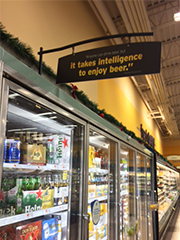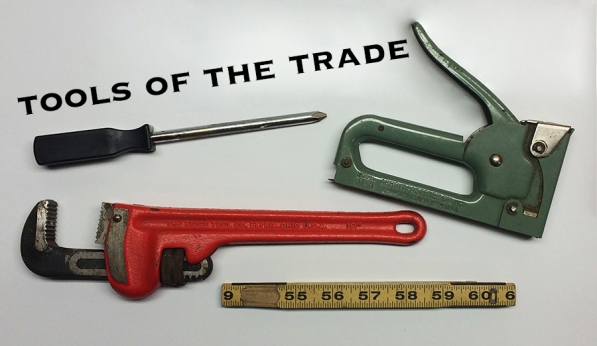Hannaford is the grocery store where I do my weekly shopping. I knew the store had a lot of information posted in it, but I didn’t realize how much until I really looked for it. The most obvious information are way finding and sale signs. Outside the building there’s a “Welcome” sign to tell you where the doors are. The main way finding signs are large signs that label each section of the store and numbered signs at the end of each aisle. Within each aisle there are more signs that label each section.
The sale signs range from signs that have specific information about a certain item to signs that are more storytelling in nature that just encourage you to buy nonspecific items. Other signs compared their prices to their competitor’s.
Some of the displays are very attractive and well thought out. It seems like they’re always adjusting the displays so they’re well taken care of. One of my favorites is a wooden display for a variety of beers. Other displays are not attractive at all and strictly functional.
In addition to the way finding and sale signs, there devices and signs to help people find and garner information. Just inside the doors there is a Customer Service kiosk where question can be answered. Throughout the store there are information centers where people can scan items for information or call someone for help.
There’s also signs for legal notices, expected behavior of customers and just information about the environment of the the store. I appreciated this sign about the LED lights in the freezers when I walked down the aisle and all the lights in the cases went out at once. It was nice to have an explanation.
When I really looked at all the that’s presented in the store, it became a little overwhelming. I wonder if this is why I’m mentally tired at the end of a shopping trip. Even though the information is overwhelming when I look at all of it, I’m glad it’s there. The store is design well and really well thought out.
My favorite piece of information design during this trip was this handwritten sign on the bottle return machine. I wonder how many people complained that the machine wouldn’t give them a bottle return slip before they thought to put this sign up. Gorilla style information design at it’s finest.

























